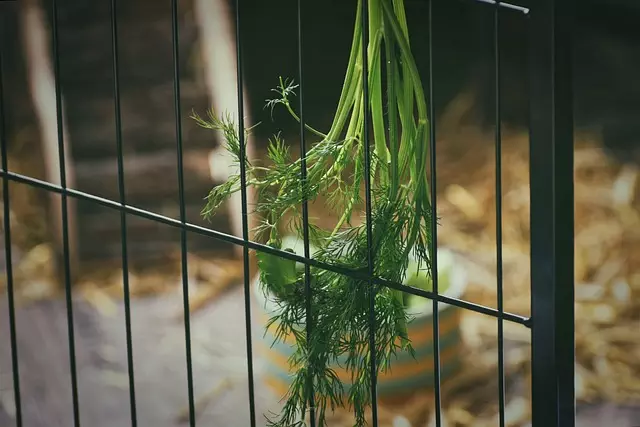Kratom, a plant from Southeast Asia with active compounds like mitragynine and 7-hydroxymitragynine, has ergogenic benefits that can enhance athletes' endurance by modulating pain perception, energy levels, and mental focus. The unique growing conditions of its native habitats—specifically the soil composition, climate, and environmental factors found in countries like Indonesia, Thailand, and Malaysia—contribute to kratom's efficacy. For optimal performance, it's crucial to use high-quality, sustainably sourced strains of kratom that are free from contaminants. Training programs should also simulate competitive stresses by incorporating variables like altitude, temperature, and terrain to replicate the conditions where kratom grows best. By combining interval training, steady-state cardio, strength conditioning, and strategic use of kratom with these environmental optimization techniques, athletes can potentially achieve greater endurance and performance improvements. Athletes should be aware that understanding the correct dosing and timing is key to maximizing kratom's effects, starting with a low dose for beginners to assess personal tolerance. Always source kratom responsibly, considering both sustainability and legal regulations, to safely harness its potential benefits for athletic training.
Embark on an exploration of enhancing endurance through the strategic incorporation of kratom into your training regimen. This article delves into the cultivation of kratom—a plant with origins in specific regions, as detailed by “where does kratom grow” inquiries—and its profound impact on athletic prowess. Unlocking the secrets to endurance potential, we will guide you through creating conducive training environments and integrating this botanical compound into your fitness routine for maximized gains. Join us as we navigate the science and practice behind kratom’s role in endurance sports, offering a comprehensive understanding of how to harness its benefits to push your limits further.
- Unlocking Endurance Potential: The Role of Kratom and Optimal Training Environments
- Cultivating Kratom: Understanding Its Growth and Impact on Athletic Performance
- Integrating Kratom into Your Training Regimen for Maximized Endurance Gains
Unlocking Endurance Potential: The Role of Kratom and Optimal Training Environments

Kratom, a plant native to Southeast Asia, has garnered attention in various fitness and endurance circles for its potential ergogenic properties. The active compounds found in kratom leaves, primarily mitragynine and 7-hydroxymitragynine, are believed to play a role in enhancing endurance by modulating pain perception, increasing energy levels, and potentially improving mental focus. Understanding where does kratom grow is crucial as the soil composition, climate, and environmental conditions in its native regions contribute to its efficacy. When sourcing kratom for training purposes, it’s important to opt for high-quality strains that are sustainably harvested and free from contaminants.
Optimal training environments also play a pivotal role in unlocking one’s endurance potential when combined with kratom supplementation. A well-designed training program should consider variables such as altitude, temperature, and terrain to simulate stresses on the body similar to those encountered during competition or strenuous activities. By incorporating interval training, steady-state cardio, and strength conditioning in an environment that mimics the conditions where kratom naturally thrives, athletes can experience enhanced performance and endurance. It is through a harmonious blend of environmental optimization and strategic kratom use that individuals can reach new heights in their endurance capabilities.
Cultivating Kratom: Understanding Its Growth and Impact on Athletic Performance

Kratom, a tropical evergreen tree native to Southeast Asia, has garnered attention in various sectors, including athletic performance enhancement. The primary regions where kratom grows are countries like Indonesia, Malaysia, Thailand, and Papua New Guinea. These environments provide the optimal conditions for the plant’s cultivation, with rich soil, ample rainfall, and the right humidity levels. Understanding how and where kratom thrives is crucial for sustainable harvesting practices and quality control, which directly impact the alkaloid content present in the leaves. These alkaloids, namely mitragynine and 7-hydroxymitragynine, are believed to contribute to endurance improvement by modulating pain perception and increasing energy levels. Athletes interested in incorporating kratom into their training regimen should consider the specific strains and their respective origins, as the terroir of the soil and climate can influence the alkaloid profile and subsequent effects on performance. Properly cultivated kratom can offer a natural approach to enhancing stamina and endurance, potentially benefiting athletes seeking to optimize their training without relying solely on synthetic supplements.
Integrating Kratom into Your Training Regimen for Maximized Endurance Gains

Kratom, a tropical evergreen tree native to Southeast Asia, has gained attention in fitness and athletic performance circles due to its potential ergogenic properties. Where does kratom grow naturally? Primarily in countries like Indonesia, Thailand, and Malaysia. The active compounds found in kratom leaves, namely mitragynine and 7-hydroxymitragynine, are believed to influence endurance by modulating pain perception, increasing energy, and enhancing mental focus. When integrating kratom into your training regimen for maximized endurance gains, it’s crucial to understand the proper dosing and timing to avoid overburdening the body.
To effectively use kratom in your endurance training, start with a low dose to assess your tolerance and how your body responds. Typically, consuming kratom about 30 minutes to an hour before beginning your workout can provide a gradual onset of its stimulating effects. It’s important to monitor your performance closely during the initial phase to determine the optimal dosage that supports your endurance without causing sedation or overstimulation. Additionally, combining kratom with other training strategies like high-intensity interval training (HIIT), progressive overload, and adequate recovery can synergize its benefits for improved endurance and overall fitness. Always prioritize natural sources of kratom when available, ensuring you adhere to sustainable practices and legal regulations concerning the use of this plant.
In conclusion, the integration of kratom training into an athlete’s regimen can significantly enhance endurance potential. By understanding where kratom grows and its optimal cultivation conditions, as detailed in this article, athletes can leverage this natural substance to augment their performance. The key lies in the careful and informed application of kratom within a well-structured training environment that caters to the athlete’s specific needs. This holistic approach not only capitalizes on the benefits of kratom but also emphasizes the importance of a comprehensive fitness routine. Athletes aiming to improve their endurance should consider this natural supplement in conjunction with tailored training practices, setting a solid foundation for performance gains.






